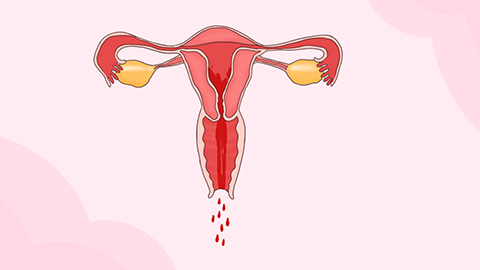What causes slight bleeding of bright red blood during the second trimester of pregnancy, and what should be done?
Light bleeding with bright red blood during the second trimester of pregnancy may be caused by local cervical vascular rupture, low-lying placenta, threatened miscarriage, cervical polyps, vaginitis, or other conditions. Symptoms can often be improved through rest, avoiding stimulation, and medication. However, if bleeding increases or is accompanied by abdominal pain, immediate medical attention is required.
1. Local cervical vascular rupture: During pregnancy, the cervix becomes congested and fragile, making it prone to vascular rupture and bleeding after sexual intercourse or gynecological examinations. The bleeding is usually minimal and not associated with abdominal pain. It is recommended to temporarily abstain from sexual activity, avoid strenuous activities, maintain external genital hygiene, and monitor the bleeding.
2. Low-lying placenta: When the placenta attaches to the lower segment of the uterus, near or covering the cervical os, it may bleed due to stretching as the uterus enlarges. This condition typically does not cause abdominal pain. It is advised to reduce physical activity, avoid prolonged standing or sitting, and have regular follow-up ultrasounds to monitor changes in placental position.

3. Threatened miscarriage: Uterine contractions may cause separation of the fetal membranes from the uterine wall, resulting in bleeding, often accompanied by mild abdominal pain or backache. It is recommended to take medications such as progesterone soft capsules, dydrogesterone tablets, or magnesium sulfate injection under medical supervision to alleviate symptoms.
4. Cervical polyps: Hormonal changes during pregnancy can cause cervical polyps to enlarge, leading to surface vessel rupture and minor bleeding without abdominal pain. Under a doctor's guidance, medications such as ethamsylate injection, cefuroxime axetil tablets, or progesterone capsules may be used to manage symptoms.
5. Vaginitis: Bacterial or fungal infections can cause vaginal mucosal congestion, and inflammatory irritation may lead to slight bleeding, along with vaginal itching and abnormal discharge. Follow medical advice to use medications such as clotrimazole suppositories, metronidazole suppositories, or nitrofurantoin-nystatin vaginal ointment to improve symptoms.
Daily care should include maintaining external genital cleanliness by washing with warm water, frequently changing cotton underwear, avoiding fatigue, ensuring adequate rest, eating a light, nutritious, and balanced diet, and maintaining emotional stability.





